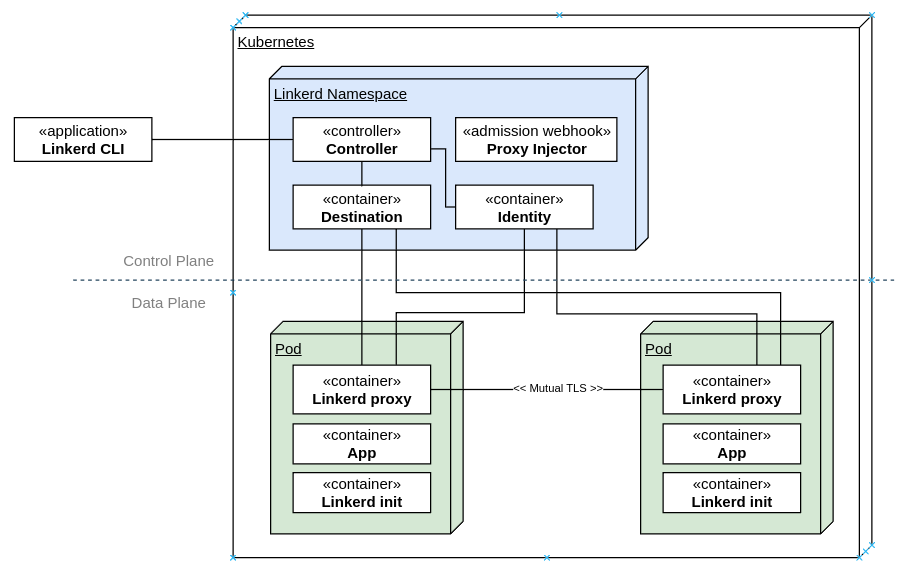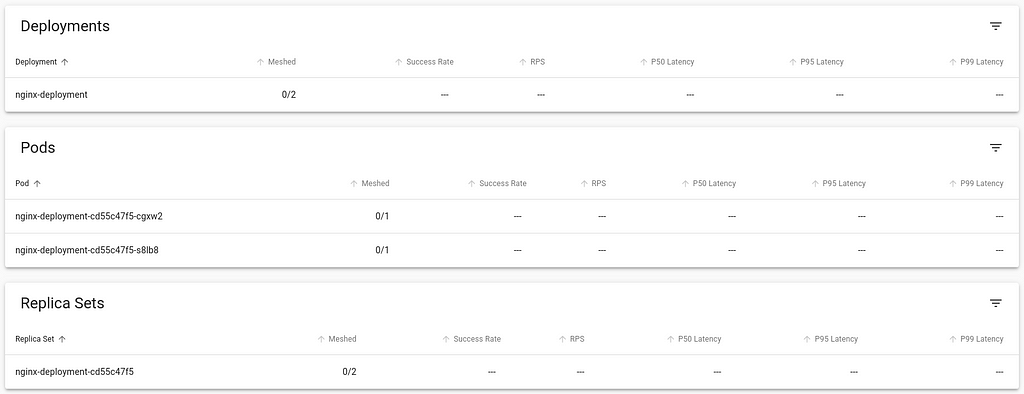tl;dr:
Ok-wrapping as needed in today s Rust is a significant distraction, because there are multiple ways to do it. They are all slightly awkward in different ways, so are least-bad in different situations. You must choose a way for every fallible function, and sometimes change a function from one pattern to another.
Rust really needs
#[throws] as a first-class language feature. Code using
#[throws] is simpler and clearer.
Please try out withoutboats s
fehler. I think you will like it.
Contents
A recent personal experience in coding style
Ever since I read withoutboats s
2020 article about
fehler, I have been using it in most of my personal projects.
For
Reasons I recently had a go at eliminating the dependency on
fehler from
Hippotat. So, I made a branch, deleted the dependency and imports, and started on the whack-a-mole with the compiler errors.
After about a half hour of this, I was starting to feel queasy.
After an hour I had decided that basically everything I was doing was making the code worse. And, bizarrely, I kept having to make
individual decisons about what idiom to use in each place. I couldn t face it any more.
After sleeping on the question I decided that Hippotat would be in Debian
with fehler, or not at all. Happily the Debian Rust Team generously helped me out, so the answer is that
fehler is now in Debian, so it s fine.
For me this experience, of trying to convert Rust-with-
#[throws] to Rust-without-
#[throws] brought the
Ok wrapping problem into sharp focus.
What is
Ok wrapping? Intro to Rust error handling
(You can skip this section if you re already a seasoned Rust programer.)
In Rust, fallibility is represented by functions that return
Result<SuccessValue, Error>: this is a generic type, representing either whatever
SuccessValue is (in the
Ok variant of the data-bearing enum) or some
Error (in the
Err variant). For example,
std::fs::read_to_string, which takes a filename and returns the contents of the named file, returns
Result<String, std::io::Error>.
This is a nice and typesafe formulation of, and generalisation of, the traditional C practice, where a function indicates in its return value whether it succeeded, and errors are indicated with an error code.
Result is part of the standard library and there are convenient facilities for checking for errors, extracting successful results, and so on. In particular, Rust has the postfix
? operator, which, when applied to a
Result, does one of two things: if the
Result was
Ok, it yields the inner successful value; if the
Result was
Err, it returns early from the current function, returning an
Err in turn to the caller.
This means you can write things like this:
let input_data = std::fs::read_to_string(input_file)?;
and the error handling is pretty automatic. You get a compiler warning, or a type error, if you forget the
?, so you can t accidentally ignore errors.
But, there is a downside. When you are returning a successful outcome from your function, you must convert it into a
Result. After all, your fallible function has return type
Result<SuccessValue, Error>, which is a different type to
SuccessValue. So, for example, inside
std::fs::read_to_string, we see this:
let mut string = String::new();
file.read_to_string(&mut string)?;
Ok(string)
string has type
String;
fs::read_to_string must return
Result<String, ..>, so at the end of the function we must return
Ok(string). This applies to
return statements, too: if you want an early successful return from a fallible function, you must write
return Ok(whatever).
This is particularly annoying for functions that don t actually return a nontrivial value. Normally, when you write a function that doesn t return a value you don t write the return type. The compiler interprets this as syntactic sugar for
-> (), ie, that the function returns
(), the empty tuple, used in Rust as a dummy value in these kind of situations. A block (
... ) whose last statement ends in a
; has type
(). So, when you fall off the end of a function, the return value is
(), without you having to write it. So you simply leave out the stuff in your program about the return value, and your function doesn t have one (i.e. it returns
()).
But, a function which either fails with an error, or completes successfuly without returning anything, has return type
Result<(), Error>. At the end of such a function, you must explicitly provide the success value. After all, if you just fall off the end of a block, it means the block has value
(), which is not of type
Result<(), Error>. So the fallible function must end with
Ok(()), as we see in
the example for std::fs::read_to_string.
A minor inconvenience, or a significant distraction?
I think the need for
Ok-wrapping on all success paths from fallible functions is generally regarded as just a minor inconvenience. Certainly the experienced Rust programmer gets very used to it. However, while trying to remove
fehler s
#[throws] from Hippotat, I noticed something that is evident in codebases using vanilla Rust (without
fehler) but which goes un-remarked.
There are multiple ways to write the
Ok-wrapping, and the different ways are appropriate in different situations.
See the following examples, all taken from a
real codebase. (And it s not just me: I do all of these in different places, - when I don t have
fehler available - but all these examples are from code written by others.)
Idioms for
Ok-wrapping - a bestiary
Wrap just a returned variable binding
If you have the return value in a variable, you can write
Ok(reval) at the end of the function, instead of
retval.
pub fn take_until(&mut self, term: u8) -> Result<&'a [u8]>
// several lines of code
Ok(result)
If the returned value is not already bound to variable, making a function fallible might mean choosing to bind it to a variable.
Wrap a nontrivial return expression
Even if it s not just a variable, you can wrap the expression which computes the returned value. This is often done if the returned value is a struct literal:
fn take_from(r: &mut Reader<'_>) -> Result<Self>
// several lines of code
Ok(AuthChallenge challenge, methods )
Introduce
Ok(()) at the end
For functions returning
Result<()>, you can write
Ok(()).
This is usual, but
not ubiquitous, since sometimes you can omit it.
Wrap the whole body
If you don t have the return value in a variable, you can wrap the whole body of the function in
Ok( ). Whether this is a good idea depends on how big and complex the body is.
fn from_str(s: &str) -> std::result::Result<Self, Self::Err>
Ok(match s
"Authority" => RelayFlags::AUTHORITY,
// many other branches
_ => RelayFlags::empty(),
)
Omit the wrap when calling fallible sub-functions
If your function wraps another function call of the same return and error type, you don t need to write the
Ok at all. Instead, you can simply call the function and not apply
?.
You can do this even if your function selects between a number of different sub-functions to call:
fn fmt(&self, f: &mut std::fmt::Formatter<'_>) -> std::fmt::Result
if flags::unsafe_logging_enabled()
std::fmt::Display::fmt(&self.0, f)
else
self.0.display_redacted(f)
But this doesn t work if the returned error type isn t the same, but needs the autoconversion implied by the
? operator.
Convert a fallible sub-function error with
Ok( ... ?)
If the final thing a function does is chain to another fallible function, but with a different error type, the error must be converted somehow. This can be done with
?.
fn try_from(v: i32) -> Result<Self, Error>
Ok(Percentage::new(v.try_into()?))
Convert a fallible sub-function error with
.map_err
Or, rarely, people solve the same problem by converting explicitly with
.map_err:
pub fn create_unbootstrapped(self) -> Result<TorClient<R>>
// several lines of code
TorClient::create_inner(
// several parameters
)
.map_err(ErrorDetail::into)
What is to be done, then?
The
fehler library is in excellent taste and has the answer. With
fehler:
- Whether a function is fallible, and what it s error type is, is specified in one place. It is not entangled with the main return value type, nor with the success return paths.
- So the success paths out of a function are not specially marked with error handling boilerplate. The end of function return value, and the expression after
return, are automatically wrapped up in Ok. So the body of a fallible function is just like the body of an infallible one, except for places where error handling is actually involved.
- Error returns occur through
? error chaining, and with a new explicit syntax for error return.
- We usually talk about the error we are possibly returning, and avoid talking about
Result unless we need to.
fehler provides:
- An attribute macro
#[throws(ErrorType)] to make a function fallible in this way.
- A macro
throws!(error) for explicitly failing.
This is precisely correct. It is very ergonomic.
Consequences include:
- One does not need to decide where to put the
Ok-wrapping, since it s automatic rather than explicitly written out.
- Specifically, what idiom to adopt in the body (for example
write!(...)?; vs write!(...) in a formatter) does not depend on whether the error needs converting, how complex the body is, and whether the final expression in the function is itself fallible.
- Making an infallible function fallible involves only adding
#[throws] to its definition, and ? to its call sites. One does not need to edit the body, or the return type.
- Changing the error returned by a function to a suitably compatible different error type does not involve changing the function body.
- There is no need for a local
Result alias shadowing std::result::Result, which means that when one needs to speak of Result explciitly, the code is clearer.
Limitations of fehler
But, fehler is a Rust procedural macro, so it cannot get everything right. Sadly there are some wrinkles.
- You can t write
#[throws] on a closure.
- Sometimes you can get quite poor error messages if you have a sufficiently broken function body.
- Code inside a macro call isn t properly visible to
fehler so sometimes return statements inside macro calls are untreated. This will lead to a type error, so isn t a correctness hazard, but it can be nuisance if you like other syntax extensions eg if_chain.
#[must_use] #[throws(Error)] fn obtain() -> Thing; ought to mean that Thing must be used, not the Result<Thing, Error>.
But, Rust-with-
#[throws] is so much nicer a language than Rust-with-mandatory-
Ok-wrapping, that these are minor inconveniences.
Please can we have
#[throws] in the Rust language
This ought to be part of the language, not a macro library. In the compiler, it would be possible to get the all the corner cases right. It would make the feature available to everyone, and it would quickly become idiomatic Rust throughout the community.
It is evident from reading writings from the time, particularly those from withoutboats, that there were significant objections to automatic
Ok-wrapping. It seems to have become quite political, and some folks burned out on the topic.
Perhaps, now, a couple of years later, we can revisit this area and solve this problem in the language itself ?
Explicitness
An argument I have seen made against automatic
Ok-wrapping, and, in general, against any kind of useful language affordance, is that it makes things less explicit.
But this argument is fundamentally wrong for
Ok-wrapping. Explicitness is not an unalloyed good. We humans have only limited attention. We need to focus that attention where it is actually needed. So explicitness is good in situtions where what is going on is unusual; or would otherwise be hard to read; or is tricky or error-prone. Generally: explicitness is good for things where we need to direct humans attention.
But
Ok-wrapping is ubiquitous in fallible Rust code. The compiler mechanisms and type systems almost completely defend against mistakes. All but the most novice programmer knows what s going on, and the very novice programmer doesn t need to. Rust s error handling arrangments are designed specifically so that we can avoid worrying about fallibility unless necessary except for the
Ok-wrapping. Explicitness about
Ok-wrapping directs our attention away from whatever other things the code is doing: it is a distraction.
So, explicitness about
Ok-wrapping is a
bad thing.
Appendix - examples showning code with
Ok wrapping is worse than code using
#[throws]
Observe these diffs, from my abandoned attempt to remove the
fehler dependency from Hippotat.
I have a type alias
AE for the usual error type (
AE stands for
anyhow::Error). In the non-
#[throws] code, I end up with a type alias
AR<T> for
Result<T, AE>, which I think is more opaque but at least that avoids typing out
-> Result< , AE> a thousand times. Some people like to have a local
Result alias, but that means that the standard
Result has to be referred to as
StdResult or
std::result::Result.
With fehler and #[throws]
|
Vanilla Rust, Result<>, mandatory Ok-wrapping
|
|
|
Return value clearer, error return less wordy:
|
impl Parseable for Secret
|
impl Parseable for Secret
|
#[throws(AE)]
|
|
fn parse(s: Option<&str>) -> Self
|
fn parse(s: Option<&str>) -> AR<Self>
|
let s = s.value()?;
|
let s = s.value()?;
|
if s.is_empty() throw!(anyhow!( secret value cannot be empty ))
|
if s.is_empty() return Err(anyhow!( secret value cannot be empty ))
|
Secret(s.into())
|
Ok(Secret(s.into()))
|
|
|
|
|
No need to wrap whole match statement in Ok( ):
|
#[throws(AE)]
|
|
pub fn client<T>(&self, key: & static str, skl: SKL) -> T
|
pub fn client<T>(&self, key: & static str, skl: SKL) -> AR<T>
|
where T: Parseable + Default
|
where T: Parseable + Default
|
match self.end
|
Ok(match self.end
|
LinkEnd::Client => self.ordinary(key, skl)?,
|
LinkEnd::Client => self.ordinary(key, skl)?,
|
LinkEnd::Server => default(),
|
LinkEnd::Server => default(),
|
|
)
|
|
|
Return value and Ok(()) entirely replaced by #[throws]:
|
impl Display for Loc
|
impl Display for Loc
|
#[throws(fmt::Error)]
|
|
fn fmt(&self, f: &mut fmt::Formatter)
|
fn fmt(&self, f: &mut fmt::Formatter) -> fmt::Result
|
write!(f, :? : , &self.file, self.lno)?;
|
write!(f, :? : , &self.file, self.lno)?;
|
if let Some(s) = &self.section
|
if let Some(s) = &self.section
|
write!(f, )?;
|
write!(f, )?;
|
|
|
|
|
|
Ok(())
|
|
|
Call to write! now looks the same as in more complex case shown above:
|
impl Debug for Secret
|
impl Debug for Secret
|
#[throws(fmt::Error)]
|
|
fn fmt(&self, f: &mut fmt::Formatter)
|
fn fmt(&self, f: &mut fmt::Formatter)-> fmt::Result
|
write!(f, "Secret(***)")?;
|
write!(f, "Secret(***)")
|
|
|
|
|
Much tiresome return Ok() noise removed:
|
impl FromStr for SectionName
|
impl FromStr for SectionName
|
type Err = AE;
|
type Err = AE;
|
#[throws(AE)]
|
|
fn from_str(s: &str) -> Self
|
fn from_str(s: &str) ->AR< Self>
|
match s
|
match s
|
COMMON => return SN::Common,
|
COMMON => return Ok(SN::Common),
|
LIMIT => return SN::GlobalLimit,
|
LIMIT => return Ok(SN::GlobalLimit),
|
_ =>
|
_ =>
|
;
|
;
|
if let Ok(n@ ServerName(_)) = s.parse() return SN::Server(n)
|
if let Ok(n@ ServerName(_)) = s.parse() return Ok(SN::Server(n))
|
if let Ok(n@ ClientName(_)) = s.parse() return SN::Client(n)
|
if let Ok(n@ ClientName(_)) = s.parse() return Ok(SN::Client(n))
|
|
|
if client == LIMIT return SN::ServerLimit(server)
|
if client == LIMIT return Ok(SN::ServerLimit(server))
|
let client = client.parse().context( client name in link section name )?;
|
let client = client.parse().context( client name in link section name )?;
|
SN::Link(LinkName server, client )
|
Ok(SN::Link(LinkName server, client ))
|
|
|
|
|
edited 2022-12-18 19:58 UTC to improve, and 2022-12-18 23:28 to fix, formatting
comments
 Debian Public Statement about the EU Cyber Resilience Act and the Product Liability Directive
The European Union is currently preparing a regulation "on horizontal
cybersecurity requirements for products with digital elements" known as the
Cyber Resilience Act (CRA). It is currently in the final "trilogue" phase of
the legislative process. The act includes a set of essential cybersecurity and
vulnerability handling requirements for manufacturers. It will require products
to be accompanied by information and instructions to the user. Manufacturers
will need to perform risk assessments and produce technical documentation and,
for critical components, have third-party audits conducted. Discovered security
issues will have to be reported to European authorities within 25 hours (1).
The CRA will be followed up by the Product Liability Directive (PLD) which will
introduce compulsory liability for software.
While a lot of these regulations seem reasonable, the Debian project believes
that there are grave problems for Free Software projects attached to them.
Therefore, the Debian project issues the following statement:
Debian Public Statement about the EU Cyber Resilience Act and the Product Liability Directive
The European Union is currently preparing a regulation "on horizontal
cybersecurity requirements for products with digital elements" known as the
Cyber Resilience Act (CRA). It is currently in the final "trilogue" phase of
the legislative process. The act includes a set of essential cybersecurity and
vulnerability handling requirements for manufacturers. It will require products
to be accompanied by information and instructions to the user. Manufacturers
will need to perform risk assessments and produce technical documentation and,
for critical components, have third-party audits conducted. Discovered security
issues will have to be reported to European authorities within 25 hours (1).
The CRA will be followed up by the Product Liability Directive (PLD) which will
introduce compulsory liability for software.
While a lot of these regulations seem reasonable, the Debian project believes
that there are grave problems for Free Software projects attached to them.
Therefore, the Debian project issues the following statement:

 Check it out
Check it out 


 Dormitory room in Zostel Ernakulam, Kochi.
Dormitory room in Zostel Ernakulam, Kochi.
 Beds in Zostel Ernakulam, Kochi.
Beds in Zostel Ernakulam, Kochi.
 Onam sadya menu from Brindhavan restaurant.
Onam sadya menu from Brindhavan restaurant.
 Sadya lined up for serving
Sadya lined up for serving
 Sadya thali served on banana leaf.
Sadya thali served on banana leaf.
 We were treated with such views during the Wayanad trip.
We were treated with such views during the Wayanad trip.
 A road in Rippon.
A road in Rippon.
 Entry to Kanthanpara Falls.
Entry to Kanthanpara Falls.
 Kanthanpara Falls.
Kanthanpara Falls.
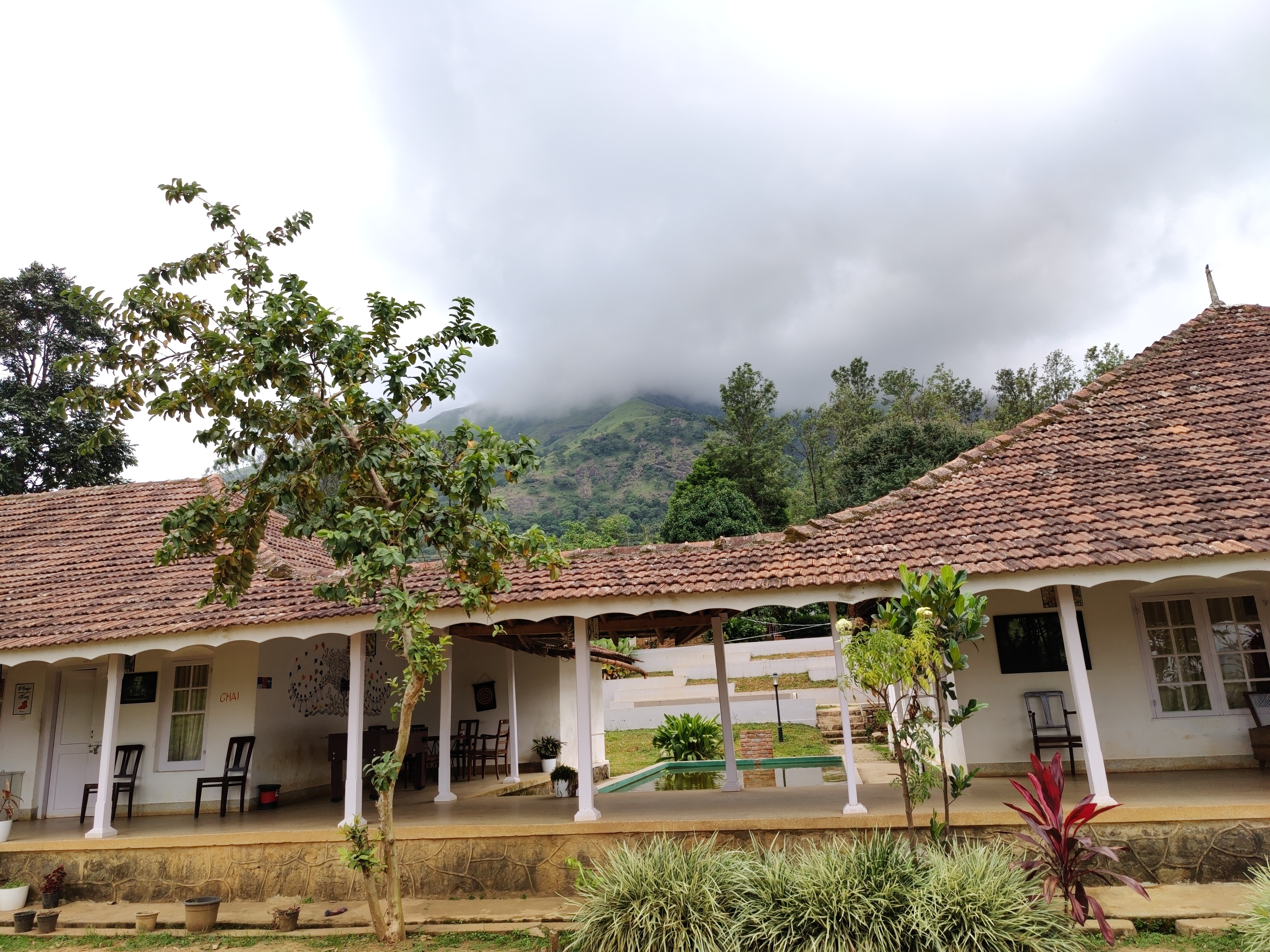 A view of Zostel Wayanad.
A view of Zostel Wayanad.
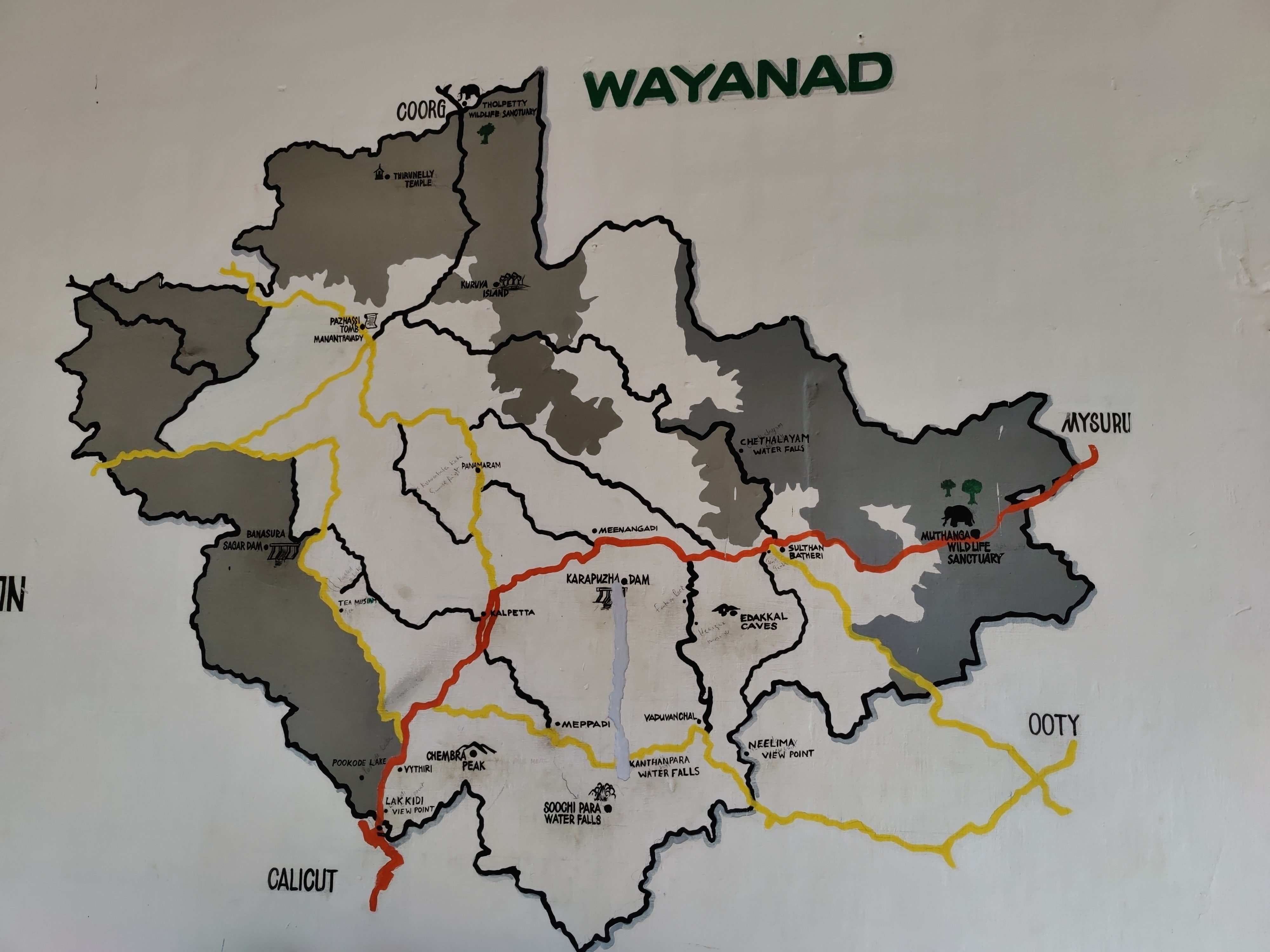 A map of Wayanad showing tourist places.
A map of Wayanad showing tourist places.
 A view from inside the Zostel Wayanad property.
A view from inside the Zostel Wayanad property.
 Terrain during trekking towards the Chembra peak.
Terrain during trekking towards the Chembra peak.
 Heart-shaped lake at the Chembra peak.
Heart-shaped lake at the Chembra peak.
 Me at the heart-shaped lake.
Me at the heart-shaped lake.
 Views from the top of the Chembra peak.
Views from the top of the Chembra peak.
 View of another peak from the heart-shaped lake.
View of another peak from the heart-shaped lake.
 I m one of the few folks left who run and maintain mail servers. Recently I had major troubles receiving mails from the mail servers used by a bank, and when
I m one of the few folks left who run and maintain mail servers. Recently I had major troubles receiving mails from the mail servers used by a bank, and when  Some time ago, I decided to make a small banner with the
Some time ago, I decided to make a small banner with the  So, with the encouragement of a few friends who were in the secret, this happened. In two copies, because the first attempt at the print had issues.
And yesterday we finally met that friend again, gave him all of the banners, and no violence happened, but he liked them :D
So, with the encouragement of a few friends who were in the secret, this happened. In two copies, because the first attempt at the print had issues.
And yesterday we finally met that friend again, gave him all of the banners, and no violence happened, but he liked them :D
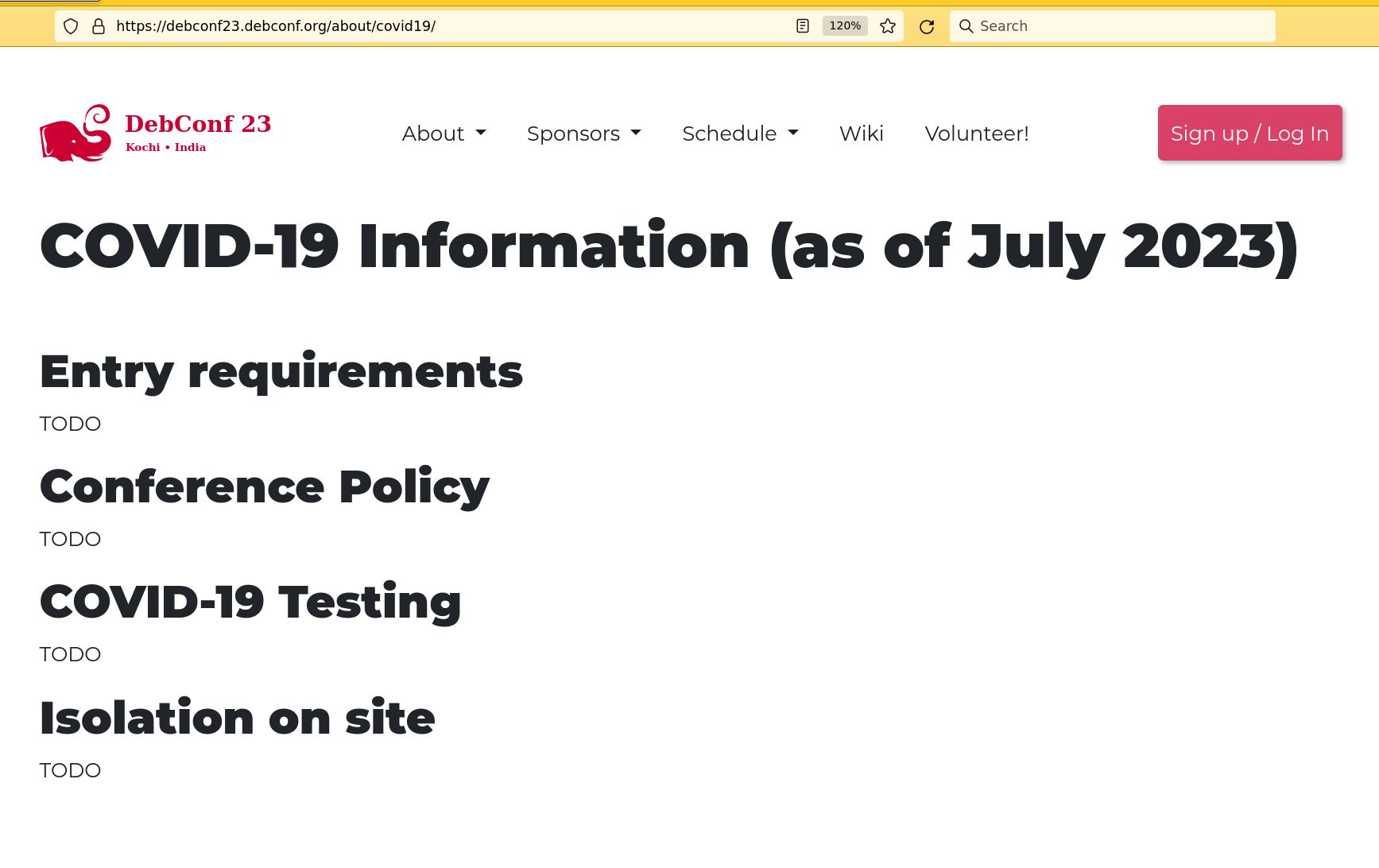 Edited 2023-09-01 00:58 +01:00 to fix the link to the Debconf policy.
Edited 2023-09-01 00:58 +01:00 to fix the link to the Debconf policy.
 But I m drifting from the topic/movie.
But I m drifting from the topic/movie. 
 I'm really
puzzled why someone invests lifetime to dig into company internal history
to try get something right, do a lengthy explanation to the whole team,
use the time of others, even mention that there was no explanation of
why it's not the default value anymore it should be, and repeat the same
mistake by not writing down anything in the commit message.
For the current company I'm inclined to propose a commit message validator.
For a potential future company I might join, I guess I ask for real world
git logs from repositories I should contribute to. Seems that this is another
valuable source of information to qualify the company culture. Next up to
the existence of whiteboards in the office.
I'm really happy that at least a majority of the people contributing to Debian
writes somewhat decent commit messages and changelogs. Let that be a reminder
to myself to improve in that area the next time I've to change something.
I'm really
puzzled why someone invests lifetime to dig into company internal history
to try get something right, do a lengthy explanation to the whole team,
use the time of others, even mention that there was no explanation of
why it's not the default value anymore it should be, and repeat the same
mistake by not writing down anything in the commit message.
For the current company I'm inclined to propose a commit message validator.
For a potential future company I might join, I guess I ask for real world
git logs from repositories I should contribute to. Seems that this is another
valuable source of information to qualify the company culture. Next up to
the existence of whiteboards in the office.
I'm really happy that at least a majority of the people contributing to Debian
writes somewhat decent commit messages and changelogs. Let that be a reminder
to myself to improve in that area the next time I've to change something.
 Icy morning Witch Wells Az
Icy morning Witch Wells Az This post marks the beginning my yearly roundups of the favourite books and movies that I read and watched in 2022 that I plan to publish over the next few days.
Just as I did for
This post marks the beginning my yearly roundups of the favourite books and movies that I read and watched in 2022 that I plan to publish over the next few days.
Just as I did for 